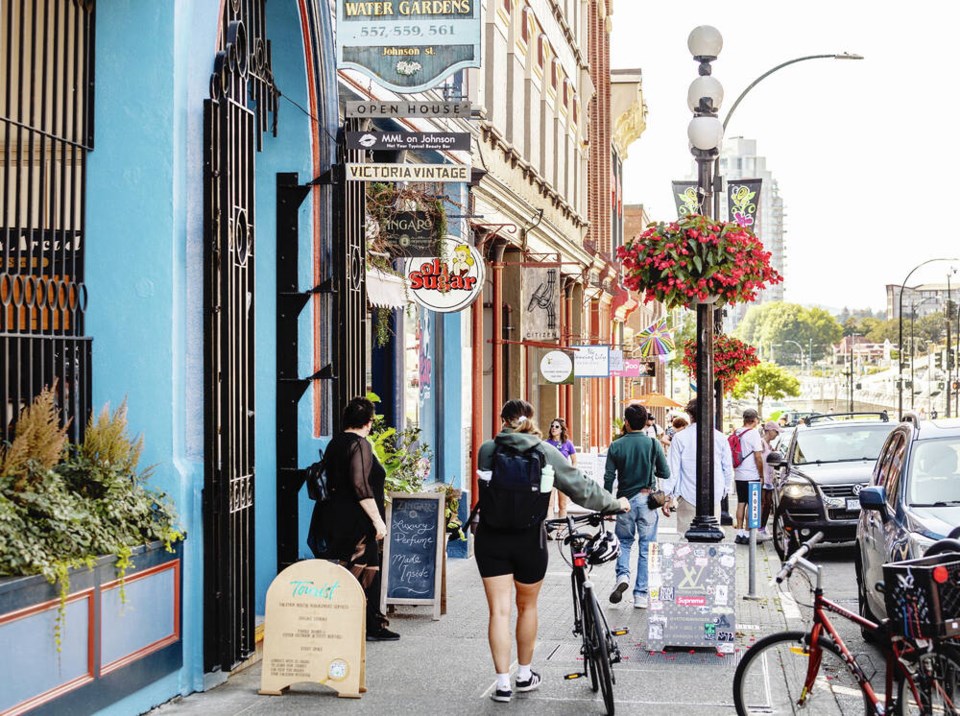The City of Victoria is considering a partnership with the Downtown Victoria Business Association to provide funding for businesses to improve the looks of their storefronts.
This week, council will consider the Business Fac抬ade Beautification Reimbursement Program, which would provide funds for improving and cleaning exterior building surfaces, upgrading exterior lighting, cleaning or replacing exterior awnings and adding landscaping.
The program is to be administered by the DVBA, which sees it as an opportunity to bring blocks of downtown businesses together to make changes.
Jeff Bray, chief executive of the DVBA, said it’s about instilling pride in each downtown block. “The building owners, the business owners will have an increased sense of pride in their block because they know that their neighbours are going to keep up their improved look,” he said. “They’ll feel that they have something to lose by not doing that.”
The program is proposed to have a $100,000 budget, with funding split between the city and DVBA.
Bray said businesses will be expected to contribute sweat equity and their own cash to ensure the program has an impact.
“This is an incentive to the property owners and the businesses on that block to join together and make their block look better. And I think when you do that over a handful of key blocks, it will be very noticeable.”
The city funding is to come from the newly created Downtown Revitalization Program.
That program, which this year will have a budget of $980,000, was established this spring when council extended pay-parking hours and rates, saying a portion of the money would go to the beautification of downtown, cultural opportunities, parks and amenities.
Since May, paid parking has been in effect downtown from 8 a.m. to 8 p.m., one hour more in the morning and two hours in the evening. Daily and hourly rates also increased by 50 cents per hour for most City of Victoria parking spaces.
Bray noted that many of the challenges downtown faces are the responsibility of the provincial government, including the ongoing mental-health and homelessness crises.
He said council has made it clear it will continue to push the province to act on those issues, and at the same time will focus on what it can control, like helping businesses deal with security and vandalism and revitalizing the look and feel of downtown.
Esquimalt launched a similar program early this year. Under the Business Façade Improvement Program, businesses can apply for grants for eligible improvements worth at least $2,000 and including permanent features such as signs, awnings, lighting, windows and exterior surfaces.
So far, just four applications for the program are ready to go ahead, although others are in the queue, said Holly Courtright, president of the Esquimalt Chamber of Commerce, which administers the program.
“There is a need for the program, so I’m not disappointed in the numbers, and I think it’s good that we’ve had some interest,” she said.
Courtright said one of the hurdles may be that while business owners are willing to jump in, building owners aren’t quite as keen. She said that could change after some of the businesses make their improvements later this year.
She said the chamber plans to meet with the township after the program’s first year to discuss what worked and what didn’t and how better to serve the business community.
>>> To comment on this article, write a letter to the editor: [email protected]



